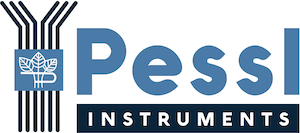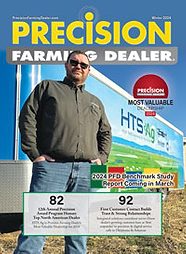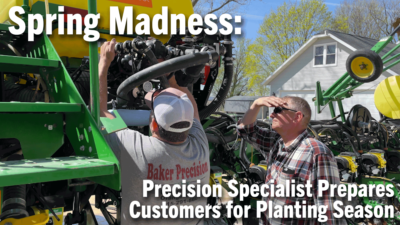Authors: Christina Pilz, Camera products & Disease models and Davide Tabarelli, Weather forecast & Hardware
Over the last few years, the impact of climate change has increased rapidly. It is influencing all steps of plant production and forcing farmers to change and adapt their behaviors.
They must search for new management strategies to make their farming approaches both ecological and economical, with a focus on return on investment (ROI).
Keeping in mind the complex interactions between the plant, soil and environment, the prediction of disease outbreaks and optimal timing of fungicide applications is essential.
It is not a small task that detailed consideration must be paid to protecting plants against diseases. With a thought-out approach, farmers can increase crop productivity with less environmental impact while maintaining the food quality.
When does a fungal disease occur?
Three critical factors must be present: The fungal pathogen has to come in contact with a susceptible host plant under favorable environmental conditions. This event is summarized in the disease triangle; all three must be present at the same time for disease to occur.

Figure 1: The disease triangle
Disease Severity
Disease Severity is influenced by:
- The plant variety (some hybrids are more sensitive than others)
- The inoculum/number of infective spores (crop rotation)
- The environmental conditions (e.g.: heavily rain distribute spores on a broader area, long lasting leaf wetness periods)
- Crop management (overwintering on crop residues, tillage)
The weather conditions need to tip the scale in favor of the fungal pathogen for a successful infection of the plant. Humidity in the form of rain, high relative humidity, leaf wetness, dew or fog favors disease development. This combined with higher temperatures, within these wet periods, increases the infection process.
Disease Monitoring
Field specific weather stations, equipped with sensors for rain, relative humidity, leaf wetness, solar radiation, soil parameters and temperature, can predict risky periods for an infection on an hourly basis. With this knowledge, fungicide applications can be optimally timed based on growth stage information — the synchrony of the crop with the disease.
Example of Disease Models:
1. Soybean Rust (phakopsora pachyrhizi)
Soybean rust (phakopsora pachyrhizi) can spread rapidly with the help of wind over exceptionally large distances. In general, the infection occurs when the leaves are moist and the temperatures are 8-28 degrees C, with an optimum of 16-28 degrees C.
Main factors for calculation of the infection and severity of the soybean rust are the leaf wetness and the air temperature. Leaves must be wet and temperatures need to be 8-28 degrees 28 to start an infection event. If modeled infection levels reach 100%, optimal conditions for the fungus to infect the plant tissue and grow inside systematically have been meet at the field location.

Figure 2: Soybean rust disease model calculation as shown in FieldClimate.
2. Stem rot (sclerotinia sclerotiorum)
Sclerotinia stem rot or white mold of soybeans is a disease caused by the fungus sclerotinia sclerotiorum. Yield losses usually occur when incidence of disease is 15 % or greater.
Symptoms usually are not observed until the crop canopy between rows has closed, creating a humid microclimate. The seed can be contaminated with sclerotinia when infected plants are harvested.
Stem Rot Disease Model
After a period of cold conditions in winter, sclerotinia overwintering in the top 5 centimeters of the soil, germinate from spring onwards to produce apothecia, when soil temperatures are 10 degrees C or higher and the soil is moist (Figure 3).
Sclerotinia does not germinate in dry soil or when the soil temperature is above 25 degrees C. Sclerotinia buried below 5 cm in the soil is also less likely to germinate. Once apothecia are fully formed, spore release (Figure 3: Sporulation - marked with orange) can occur either during the day or night, but is temperature dependent, so peak sporulation usually occurs around midday.
Apothecia can last about 20 days at 15-20 degrees C, but will shrivel and die in 10 days or less at 25 degrees C. For flowering herbs, spores landing on petals and stamens germinate rapidly (germination within 3-6 hours and infection within 24 hours, graph: two ways of possible infection: through appressoria or: cell wall degeneration called “hydrolytic Inf”) in optimum conditions of 15-25 degrees C, continuous leaf wetness and high humidity within the crop.

Figure 3: Sclerotinia disease model calculation as shown in FieldClimate.
Detailed information about the biology of the pathogen, and the model used for determination of the risk and recommendations are found online: Pessl Instruments Disease Models.
In addition, we are also collaborating with leading developers and have established seamless interfaces to third party decision support systems as well (i.e. RIM-PRO, HORTA, ProPlant, Welte, Dacom etc.).
Plant Protection Window
To offer full support for plant protection management we collaborate with our Swiss partner meteoblue, who produces site specific, hourly forecasts. FieldClimates plant protection models are based on these precise weather forecasts which are localized and calibrated based on the monitoring site.
A forecast of all the main meteorological variables and other important agronomic information, such as the window for phytosanitary interventions, is provided on an hourly basis, for a 7 day period and is updated each time the service is accessed on ng.fieldclimate.com.
Suitable periods for applying crop protection measures are shown in green color and unsuitable in red (see figure 4). Field specific, hourly plant protection windows are calculated from wind gust, precipitation and delta T which takes into account the combined effects of air temperature and relative humidity.
Delta T is an indication of whether meteorological conditions are suitable for spraying in order to maximize pesticide performance, and to minimize drift and evaporation. Optimal delta T range is 2-8 degrees C, with wind gust not above 10 m/s. Current rainfall and of the next 24 hours is also considered in order to avoid run-off of the active compound.

Figure 4: Know the best time for spraying — Plant protection window is based on field access, Delta T, current and forecasted rainfall, and wind gust.
Recommended Pessl Instruments Solutions for Disease Monitoring
A wide range of hardware solutions under iMETOS brand provide efficient and cost-effective environmental measurements. All the measured values can be combined with site-specific weather forecast and are accessible in near real-time on the FieldClimate platform and include several variables – quantity and probability of precipitation, temperature, relative humidity, and more.
We recommend one of the following: (Note: you should include wind speed and direction, since this is a standard for spray operations)
The iMETOS IMT200 includes Air Temperature and Relative Humidity sensor, a Rain Gauge and a Leaf Wetness sensor.
The iMETOS IMT300 comes with all the sensors for Evapotranspiration and Disease Models calculation: Air Temperature and Relative Humidity sensor, Rain Gauge, Global Radiation, Wind Speed and Leaf Wetness sensor.
Adjust your iMETOS and µMETOS stations to your needs by simply adding additional sensors.
Advantages and benefits of iMETOS:
- Save time and money using online monitoring solutions
- Start the work only at the proper conditions
- Give your crops possibility to grow in best possible conditions
- Monitoring to adapt tech sheet to the climatic changes (Note: what do you mean here?)
- Weather forecast to make the right decision at the right time
- Work planning tools to optimize your production
- Information on sowing window
- Information on tillage ability
The Turning Information Into Profit: Ag Innovation Under the METOS Brand series is brought to you by Pessl Instruments.
For more than 35 years, Pessl Instruments has been offering tools for informed decision-making. A complete range of wireless, solar-powered monitoring systems under the iMETOS®️ brand, and FieldClimate platform provides remote field and weather monitoring data for farmers in all climate zones.







Post a comment
Report Abusive Comment